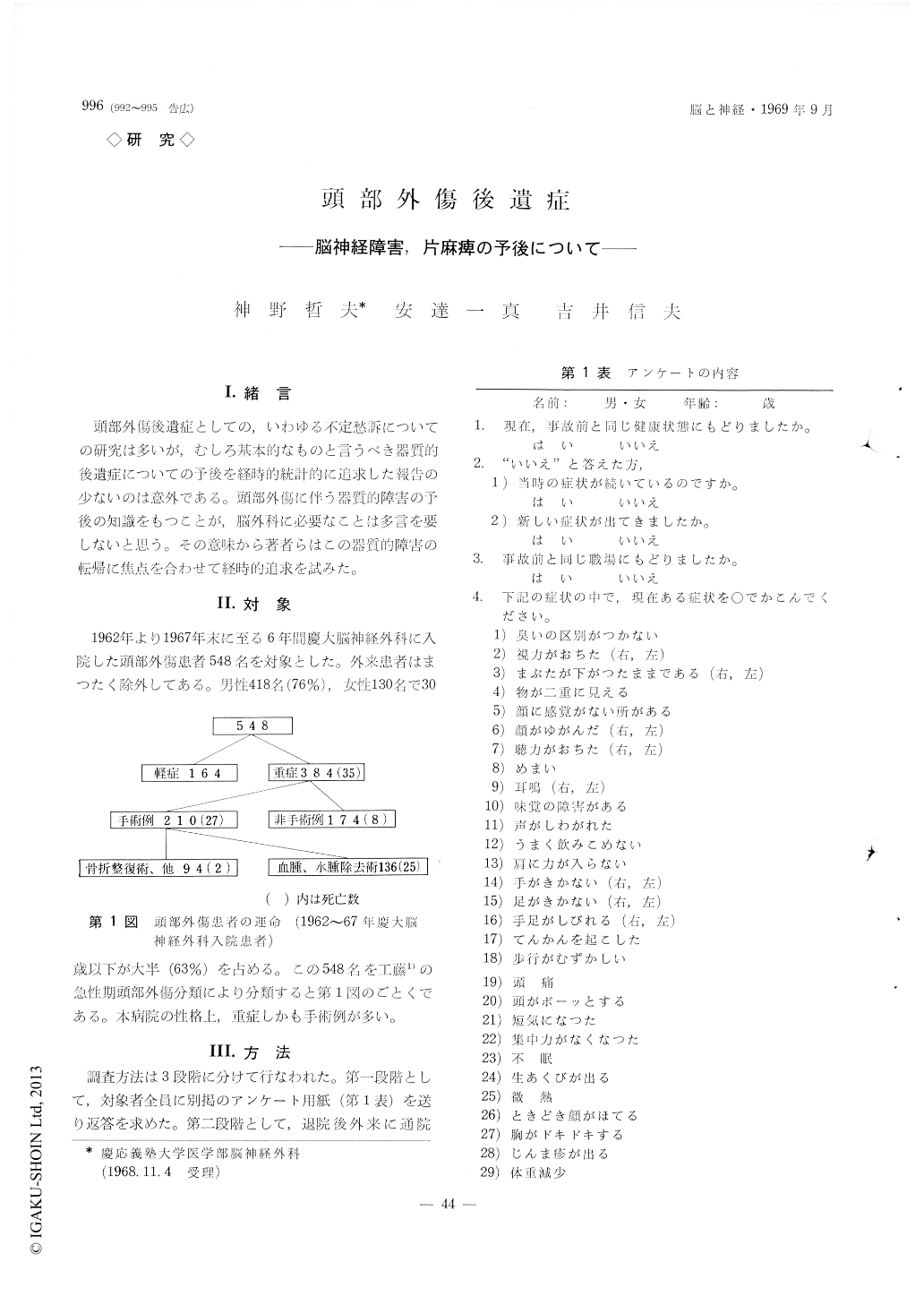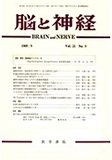Japanese
English
- 有料閲覧
- Abstract 文献概要
- 1ページ目 Look Inside
I.緒言
頭部外傷後遺症としての,いわゆる不定愁訴についての研究は多いが,むしろ基本的なものと言うべき器質的後遺症についての予後を経時的統計的に追求した報告の少ないのは意外である。頭部外傷に伴う器質的障害の予後の知識をもつことが,脳外科に必要なことは多言を要しないと思う。その意味から著者はこの器質的障害の転帰に焦点を合わせて経時的追求を試みた。
It is unexpected that few long-term follow-up concerning to post-craniocerebral traumatic organic damages has been made while many literatures con-cerning to non-organic sequelae (post-concussional syndrome) having appeared.
We surveyed 327 admitted patients of severe head injury between 1962-1967, focusing to the prognosis of the cranial nerve damages and the cortico-spinal tract damages.
The incidence of each cranial nerve damage was as follows ; Ist : 0.6%, IInd : 7.0%, III, IV, VIth : 9.0%, Vth : 1.0%, VIIth : 4.0%, VIIIth : 2.0%, IX, X, XI, XIIth : 0%.
The good prognosis of the traumatic cranial lesions except for those involving the Ist, IInd and VIIth was verified.
The prognosis of each cranial nerve damages was as follows ; 1/2 eases of the Ist nerve damages re-covered within 2 years : The IInd cranial nerve damage showed the worst prognosis. No recovery was noted among 23 cases in maximum 6 year follow-up. The optic atrophy generally appeared at 2 weeks after injury. The repair of the optic canal fractures was performed in 9 cases between 5th and 54th day after the injury, without any good result: About 60% of the III, IV, VIth cranial nerve damages showed the recovery within 2 years : 2/3 cases of the Vth cranial nerve damages recovered within 2 years : Almost of all cases of VIIth cranial nerve damages recovered within 2 years : 1/2 cases of the VIIIth cranial nerve damages showed the partial recovery within 2 years.
The incidence of the hemiplegia in our survey was 13%, which was slightly lower than the other reports. 40/42 cases of the hemiplegia showed the improvement within 6 months. Cases under 15 years old showed the better recovering tendency than the adult cases. Repeated EEG were performed in 18 cases, of which 16 cases showed the abnormal EEG, after the hemiplegia had disappeared. However, in 2 cases, EEG became normal, in spite of still show-ing the hemiplegia clinically. In these cases, the recovery from the hemiplegia was delayed.

Copyright © 1969, Igaku-Shoin Ltd. All rights reserved.


